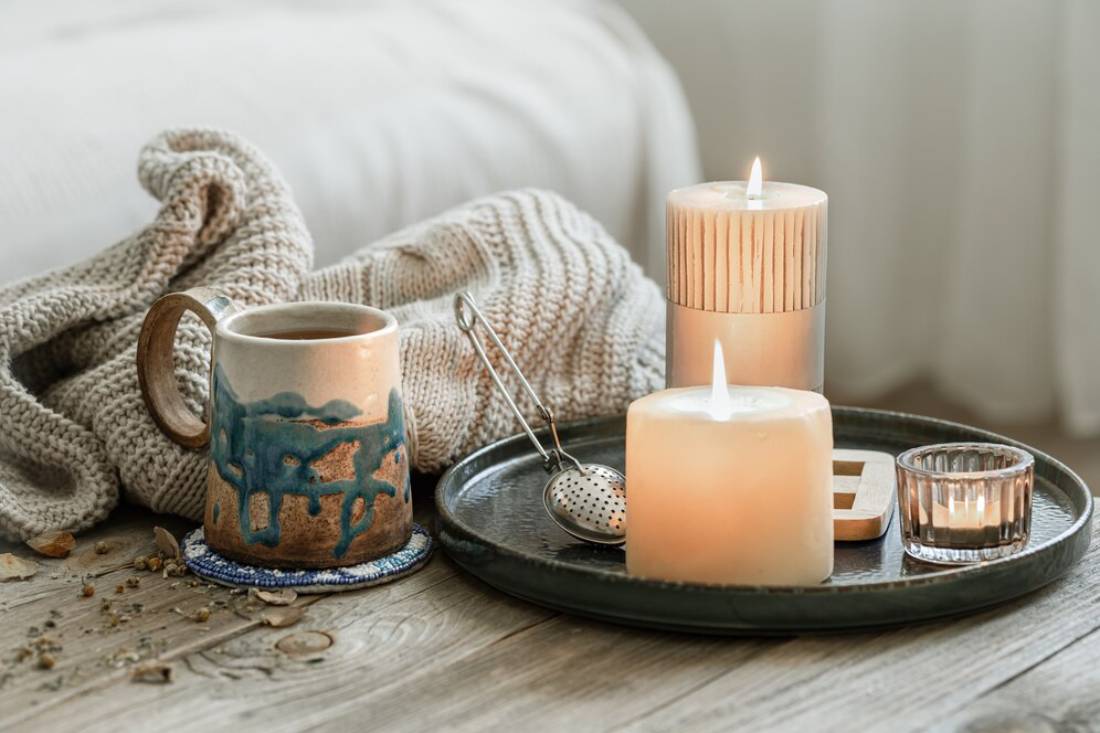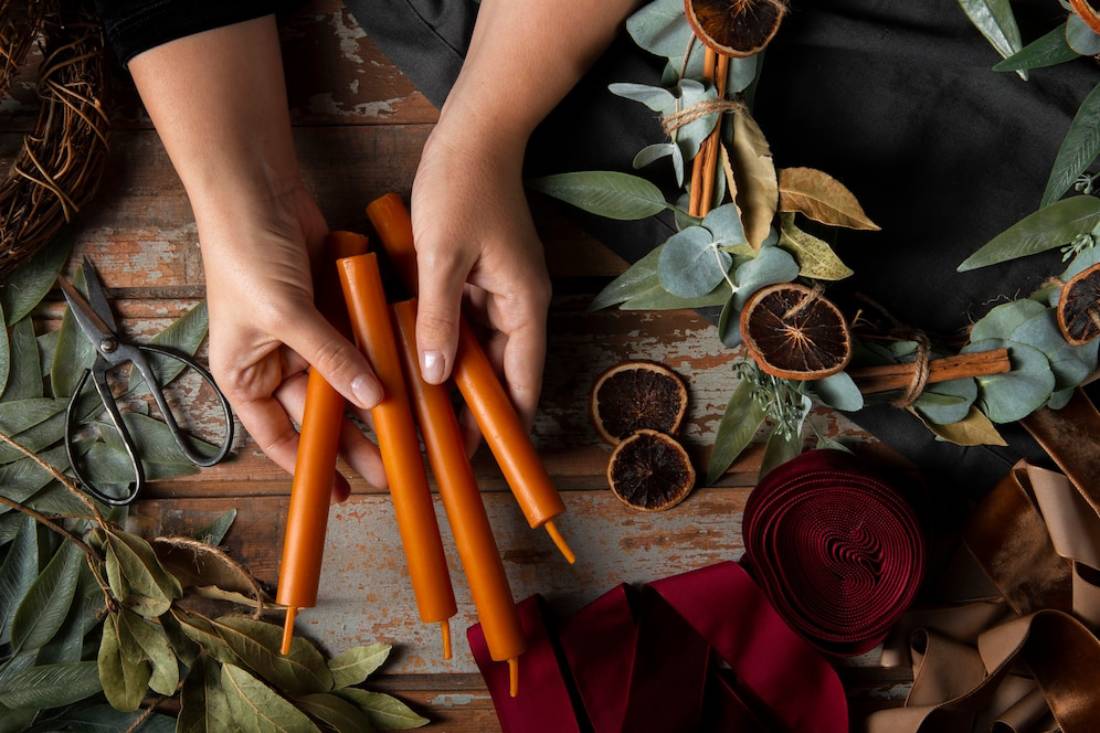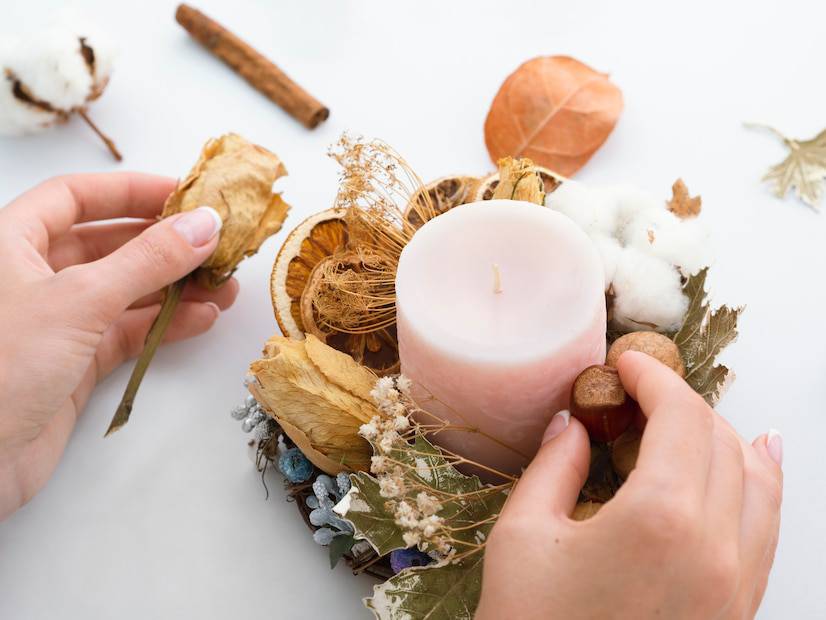
How to Create Your Own Scented Candles at Home
Making homemade scented candles is a fun and rewarding craft that allows you to personalise fragrances, experiment with colours, and create beautiful, functional decor pieces. Whether you’re looking for a relaxing hobby, a thoughtful gift idea, or a new side business, DIY candle-making offers endless possibilities.
With the right materials and techniques, you can craft candles that not only look stunning but also fill your home with delightful aromas. This guide will walk you through the process of crafting your own candles, covering essential materials, fragrance selection, and candle crafting tips to ensure high-quality results. From simple soy candles to decorative layered designs, you’ll learn how to create stunning and aromatic candles at home.
Pro Tip: Always measure your fragrance oil accurately. Too much can cause poor burning, while too little results in a weak scent. The ideal ratio is about 6-10% fragrance oil per pound of wax for a strong yet balanced aroma.
Quick Guide to DIY Candle Making
- Gather Supplies – Choose soy, beeswax, or coconut wax, and get fragrance oils, wicks, and jars.
- Prepare Jars & Wicks – Clean containers, secure wicks, and preheat jars slightly.
- Melt the Wax – Use a double boiler and monitor the temperature to prevent burning.
- Add Fragrance & Colour – Stir in fragrance oil at the right temperature (130-140°F/54-60°C).
- Pour & Set – Pour the wax slowly, let it cool for a smooth finish, and trim the wick before burning.
Important Tip: Let your candles cure for at least 24-48 hours before lighting them. This enhances scent throw and ensures an even burn.
Why Make Your Own Candles?

There are several benefits to DIY candle making:
- Customisable Scents & Designs – Choose your favourite fragrances and colours to match your style.
- Eco-Friendly – Use natural waxes like soy or beeswax for cleaner burning candles.
- Cost-Effective – Making your own candles can be more affordable than buying luxury brands.
- Great for Gifting – Handmade candles make thoughtful, personalised presents.
- Relaxing Hobby – Candle crafting is a soothing activity that helps reduce stress.
- Business Potential – Turn your candle-making hobby into a small business by selling custom candles online or at craft fairs.
Materials Needed for Homemade Scented Candles
Before starting, gather these essential supplies:
Basic Candle-Making Materials:
- Wax (soy wax, beeswax, paraffin, or coconut wax)
- Fragrance oils (lavender, vanilla, citrus, or essential oils)
- Wicks (cotton or wood wicks, depending on your preference)
- Wax dye or natural colourants (optional for coloured candles)
- Glass jars, tins, or silicone moulds for shaping your candles
- Double boiler or a heat-resistant container for melting wax
- Thermometer to monitor wax temperature
- Wick holders or chopsticks to keep the wick centred
- Mixing spoon or spatula
- Scissors to trim wicks after cooling
- Glue dots or hot glue to secure the wick to the container
Choosing the Right Wax
Different types of wax produce different candle-burning experiences:
- Soy Wax – A popular eco-friendly choice that burns cleanly and holds fragrance well.
- Beeswax – A natural wax that emits a subtle honey scent and burns longer.
- Paraffin Wax – Provides vibrant colours and a strong scent throw but isn’t as eco-friendly.
- Coconut Wax – A softer, slow-burning wax that blends well with other waxes.
- Gel Wax – Used for decorative candles with embedded objects like flowers or shells.
Step-by-Step Guide to DIY Candle Making

1. Preparing Your Candle Jars & Wicks
- Clean your jars or moulds – Ensure they are dust-free and dry.
- Attach the wick – Use a small drop of melted wax or a wick sticker to secure the wick to the bottom.
- Hold the wick in place – Wrap it around a chopstick or wick holder laid across the jar opening to keep it centred.
- Preheat the jars – Warm them slightly to help the wax adhere better and prevent cracking.
2. Melting the Wax
- Measure the wax – Fill your jar twice with wax flakes; they will melt down to half the volume.
- Melt the wax using a double boiler – Heat gently to avoid burning.
- Check the temperature – Ideal melting temperatures:
- Soy wax: 120-180°F (49-82°C)
- Beeswax: 145-175°F (63-80°C)
- Paraffin wax: 130-150°F (54-65°C)
- Coconut wax: 100-140°F (37-60°C)
3. Adding Fragrance & Colour
- Allow the wax to cool slightly before adding fragrance (ideal temp: 130-140°F or 54-60°C).
- Add fragrance oil – Use 1 oz (30ml) per pound of wax for a strong scent.
- Stir gently for even distribution.
- For coloured candles – Add dye at the same stage and mix well.
- For layered candles – Pour each layer separately and allow it to be partially set before adding the next layer.
4. Pouring the Wax
- Slowly pour the wax into the container. Pour steadily to avoid air bubbles.
- Leave some space at the top. About ½ inch (1 cm) to prevent overflow.
- Let the candle set for a few hours at room temperature.
- Top off with extra wax if the surface appears uneven after cooling.
5. Trimming & Finishing
- Trim the wick to about ¼ inch (6 mm) – This prevents excessive smoking when burning.
- Allow the candle to cure – Let it sit for 24-48 hours for a stronger scent throw.
- Decorate the jar – Add ribbons, labels, or dried flowers for a personal touch.
- Test burn your candle – Light it for a short period to check for even burning.
Creative Candle Crafting Ideas
Want to take your homemade scented candles to the next level? Try these creative techniques:
- Layered Candles – Pour wax in stages using different colours for a striped effect.
- Marbled Candles – Swirl in a few drops of food colouring before the wax sets.
- Dried Flowers & Herbs – Embed lavender, rose petals, or rosemary for a botanical look.
- Coconut Shell Candles – Use hollowed-out coconut shells for a tropical vibe.
- Citrus Peel Candles – Pour the wax into orange or lemon halves for a natural container.
- Glitter Candles – Add eco-friendly glitter for a festive, sparkling finish.
Candle Crafting Tips for Best Results
Follow these expert candle crafting tips to make high-quality candles:
- Always use the correct wick size – A wick too small won’t burn evenly; too large can create soot.
- Avoid overheating wax – Burning wax can ruin the scent and cause discolouration.
- Use high-quality fragrance oils – Low-quality oils may not mix well or retain their scent.
- Let candles cure before burning – This improves scent throw and wax consistency.
- Store candles in a cool, dry place – Protect them from sunlight and dust.
- Test different wax blends – Mixing waxes can improve burn time and fragrance retention.
Frequently Asked Questions
1. What is the best wax to use for homemade scented candles?
Soy wax is a great eco-friendly option that burns cleanly and holds fragrance well. Beeswax is another natural choice with a longer burn time, while paraffin wax offers a stronger scent throw.
2. How much fragrance oil should I add to my candles?
A good rule of thumb is to use 1 oz (30ml) of fragrance oil per pound (450g) of wax. Be sure to check the wax manufacturer’s recommendations for the best scent retention.
3. Why do my candles have sinkholes or uneven surfaces?
Sinkholes occur when the wax cools too quickly, or air gets trapped. To prevent this, pour the wax slowly and at the right temperature, then do a second pour to smooth out any imperfections.
4. How long should I let my candles cure before using them?
For the best scent throw, let soy and beeswax candles cure for 24-48 hours, while paraffin candles may need up to a week. This allows the fragrance to fully bond with the wax.
5. Can I use essential oils instead of fragrance oils?
Yes, but essential oils can be less effective as they have lower heat resistance and may not provide a strong scent throw. Use oils specifically formulated for candle making for the best results.
DIY Candle Making: A Beginner’s Guide to Crafting Beautiful Scented Candles

Creating homemade scented candles is a fulfilling and enjoyable craft that allows you to customise fragrances, colours, and styles. With the right materials and candle crafting tips, you can make candles that burn beautifully and smell amazing.
Whether you’re making candles for personal use, gifting, or even selling, this DIY candle making guide will help you master the craft. Start experimenting today and bring warmth and ambience to your home with your own beautifully crafted candles!
Looking for more creative projects? Subscribe to our newsletter for more DIY candle making ideas and expert candle crafting tips!